LIGHTS OUT NORTHEAST FLORIDA SPRING UPDATE
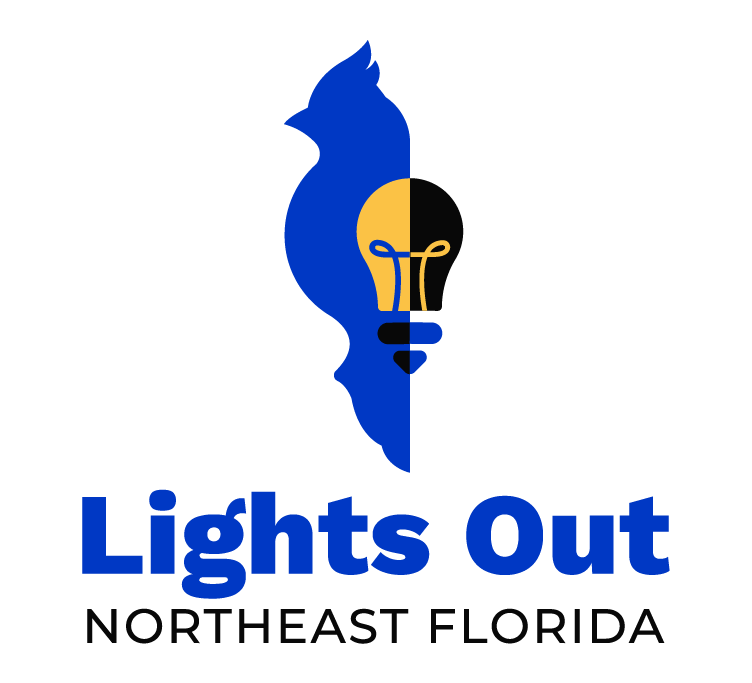 Our Lights Out Northeast Florida (LONF) initiative in partnership with Jacksonville Zoo & Gardens and St. Johns Regional Audubon Society just concluded our surveys for the spring 2023 migration season. Twenty-nine dedicated volunteers walked the downtown Jacksonville area at dawn looking for birds killed or injured by building strikes, and the data they collected will be shared with downtown business owners and building managers to point out the dangers that bright lighting at night can pose to migrating birds. Our Lights Out Northeast Florida (LONF) initiative in partnership with Jacksonville Zoo & Gardens and St. Johns Regional Audubon Society just concluded our surveys for the spring 2023 migration season. Twenty-nine dedicated volunteers walked the downtown Jacksonville area at dawn looking for birds killed or injured by building strikes, and the data they collected will be shared with downtown business owners and building managers to point out the dangers that bright lighting at night can pose to migrating birds.
Most songbirds migrate at night to avoid predators and because winds are generally calmer at night. Traveling over our area at an average of 500 to 2,000 feet above ground level (although some fly much higher), migrating songbirds typically use the stars in the night sky as their guiding lights, but bright nighttime lighting can divert the birds away from their normal migration path into brightly lit areas, where they may circle in confusion until they collide with a building or collapse from sheer exhaustion.
According to the National Audubon Society, as many as 1 billion birds die every year from collisions with buildings. Eliminating or reducing bright artificial lighting at night in downtown areas (and at private homes as well) would go a long way towards helping migrating birds survive their dangerous journey.
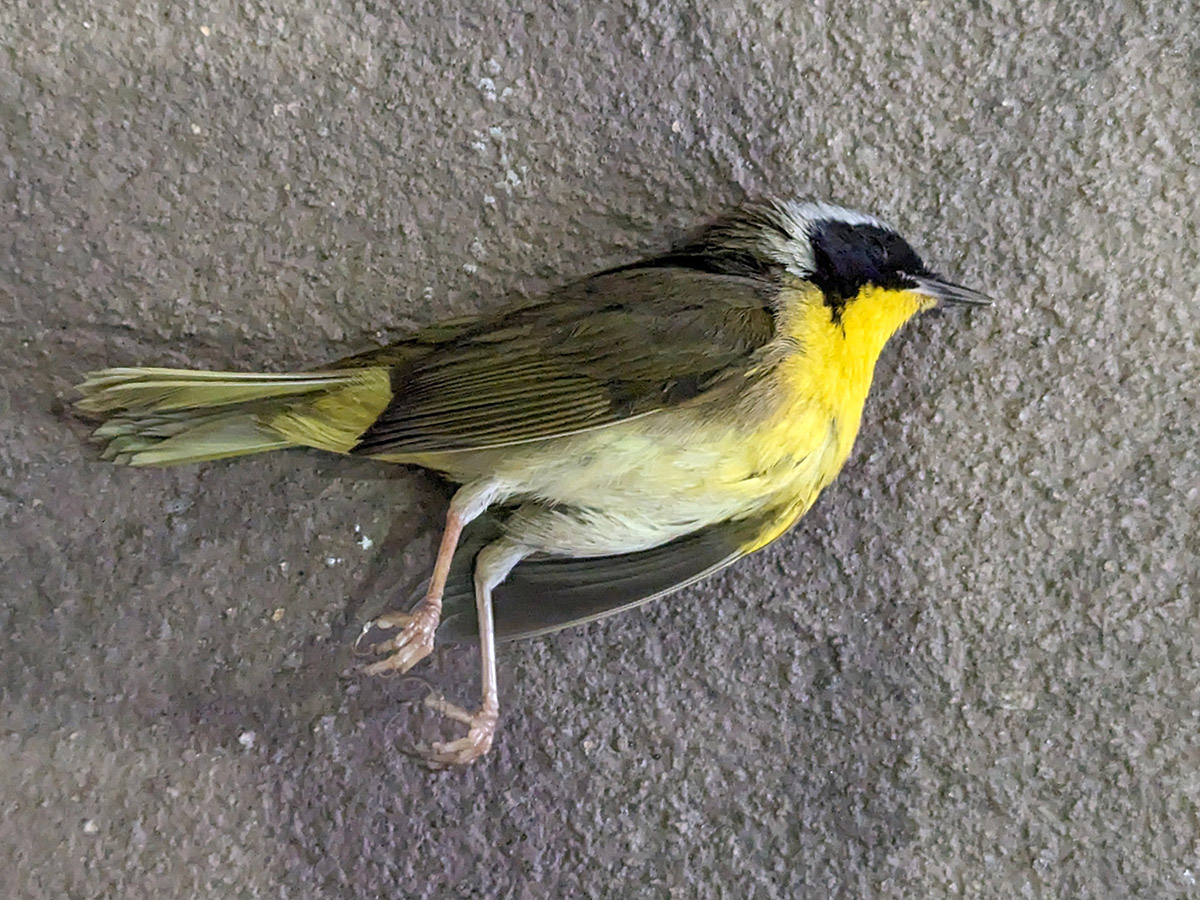 LONF volunteers began collecting data on bird deaths and injuries due to building collisions in downtown Jacksonville in the spring of 2021, and we’ve observed a stark contrast between the spring and fall migration seasons. So far, teams have found an average of 48 birds killed and 18 birds injured by building/window strikes in the downtown area during spring migration each year. In comparison, an average of 165 dead birds and 33 injured birds have been found during fall migration so far. Two main factors are believed to cause this discrepancy: 1) in the fall, newly-fledged birds are migrating with adult birds for the first time, so more birds are traveling; and 2) newly-fledged birds are less experienced and more likely to collide with a building. So we unfortunately expect to see much higher numbers of dead and injured birds on our fall surveys this year. LONF volunteers began collecting data on bird deaths and injuries due to building collisions in downtown Jacksonville in the spring of 2021, and we’ve observed a stark contrast between the spring and fall migration seasons. So far, teams have found an average of 48 birds killed and 18 birds injured by building/window strikes in the downtown area during spring migration each year. In comparison, an average of 165 dead birds and 33 injured birds have been found during fall migration so far. Two main factors are believed to cause this discrepancy: 1) in the fall, newly-fledged birds are migrating with adult birds for the first time, so more birds are traveling; and 2) newly-fledged birds are less experienced and more likely to collide with a building. So we unfortunately expect to see much higher numbers of dead and injured birds on our fall surveys this year.
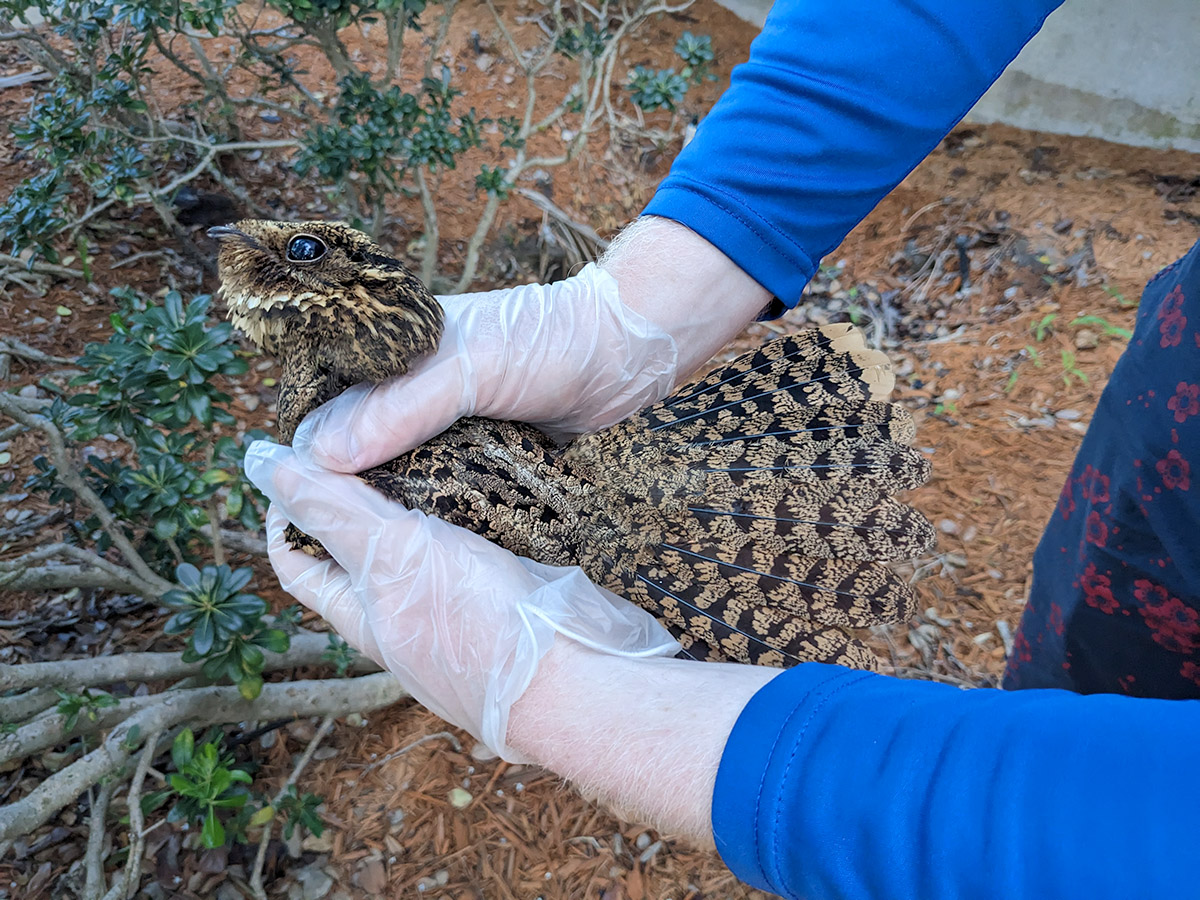 One thing to keep in mind is that the data only reflects part of the actual number of birds affected by building strikes in the downtown Jacksonville area each season; we know there are many more birds that we haven’t found. There are several reasons for this: 1) with a limited number of volunteers, it’s not possible to survey every building every day during the migration period; 2) many buildings have terraces or balconies that our volunteers are not able to access; and 3) custodial staff often clear away dead birds before our teams can find them. The good news is that we are working to share our findings with downtown building managers (thanks to the assistance of Downtown Vision, Inc.) with the goal of encouraging them to sign our Commercial Building Pledge to reduce or eliminate bright lighting at night on their buildings from 11 pm until 6 am during the spring and fall migration seasons. One thing to keep in mind is that the data only reflects part of the actual number of birds affected by building strikes in the downtown Jacksonville area each season; we know there are many more birds that we haven’t found. There are several reasons for this: 1) with a limited number of volunteers, it’s not possible to survey every building every day during the migration period; 2) many buildings have terraces or balconies that our volunteers are not able to access; and 3) custodial staff often clear away dead birds before our teams can find them. The good news is that we are working to share our findings with downtown building managers (thanks to the assistance of Downtown Vision, Inc.) with the goal of encouraging them to sign our Commercial Building Pledge to reduce or eliminate bright lighting at night on their buildings from 11 pm until 6 am during the spring and fall migration seasons.
Homeowners can help, too! Simply sign our Homeowner Pledge to go “lights out for birds” during migration. As more businesses and private homeowners in our area join the lights out movement, we can reduce bird mortality and do our part to help save the lives of migrating birds.
SPRING MIGRATION IN TEXAS
by Jessica Dyszel
Spring migration is a wonderful time of year filled with color, song, dance, and frivolity. While many songbirds migrate through Florida, most do not stay long, so seeing these beauties in all their wonder can be challenging. Therefore, my sister Andrea Banks and I decided to experience spring migration to its fullest in Texas, a migrant-heavy state with some of the best birding in the country.
We chose South Padre Island, the barrier island of south coastal Texas just above the US-Mexico border, making it a prime area for migrant birds and some vagrant Mexican birds. South Padre is a birder’s paradise. The Birding Center offers trails through mangroves and feeding stations to attract birds. Indigo Buntings flock to the feeders along with many Rose-breasted Grosbeaks, while Hooded and Kentucky Warblers skulk through the understory. Great-tailed Grackles playfully call and make quite the scene as they hop from tree to tree and swoop at one another. Everywhere you look there is a bird!
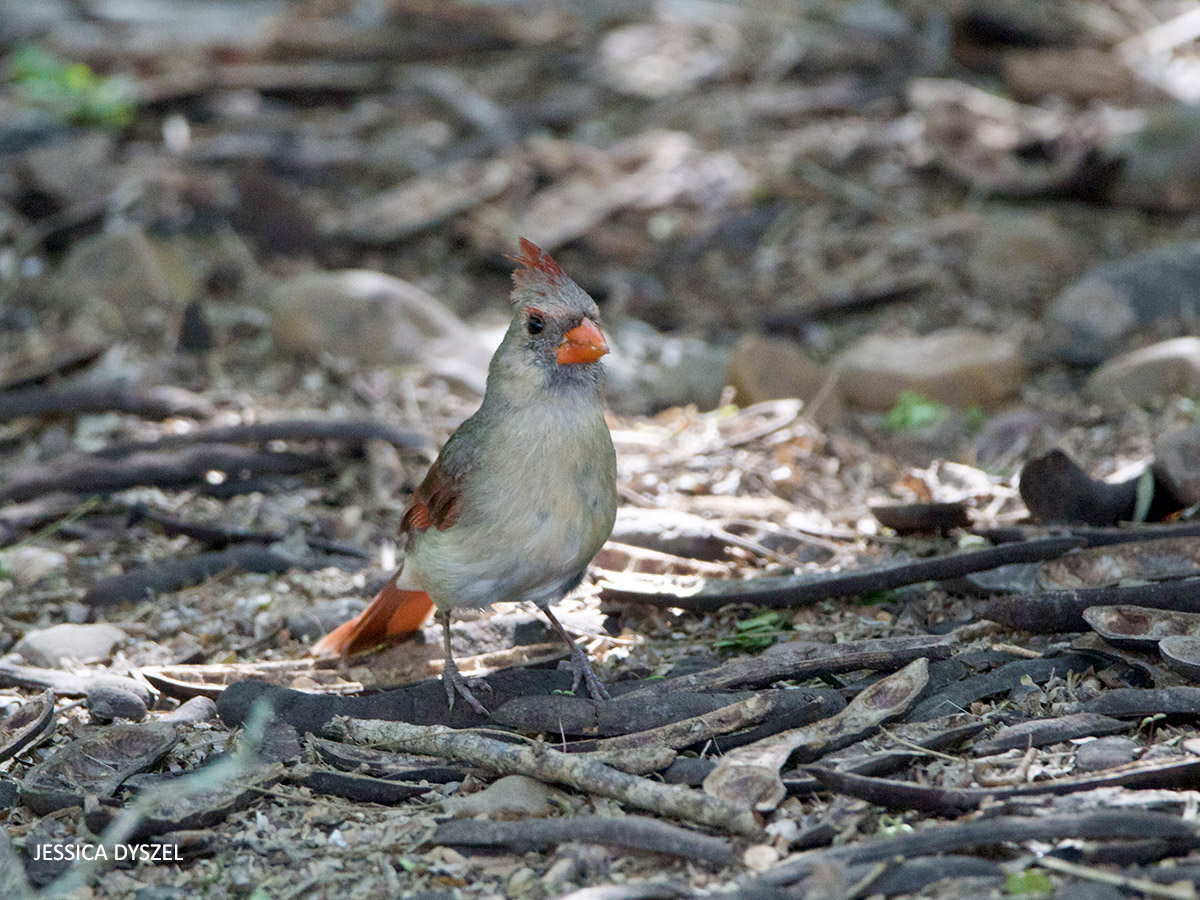 Our major trip was Laguna Atascosa, a large preserve inland of the barrier island, ripe with vegetation and wetland areas. We lost ourselves on the drive into the refuge and could have spent most of the day there. Greater Roadrunners blazed across the road while Harris’s Hawks stood vigil on telephone poles. Every post featured its resident Golden-fronted Woodpecker loudly declaring its claim to the post while a chorus of Long and Curve-billed Thrashers sang from the bushes below, only to be broken by the lovely songs of Lark Sparrows and then the intermittent cacophony of Plain Chachalacas deafening everything. Scissor-tailed Flycatchers with their streaming tails gracefully glide out while kingbirds perch along the brushy tops and telephone wires. Sandpipers work through the wet fields and raptors search out thermals to start their morning ascension. Meanwhile, there is a constant buzz of hummingbirds and swallows speeding past in their frantic search for food. Our major trip was Laguna Atascosa, a large preserve inland of the barrier island, ripe with vegetation and wetland areas. We lost ourselves on the drive into the refuge and could have spent most of the day there. Greater Roadrunners blazed across the road while Harris’s Hawks stood vigil on telephone poles. Every post featured its resident Golden-fronted Woodpecker loudly declaring its claim to the post while a chorus of Long and Curve-billed Thrashers sang from the bushes below, only to be broken by the lovely songs of Lark Sparrows and then the intermittent cacophony of Plain Chachalacas deafening everything. Scissor-tailed Flycatchers with their streaming tails gracefully glide out while kingbirds perch along the brushy tops and telephone wires. Sandpipers work through the wet fields and raptors search out thermals to start their morning ascension. Meanwhile, there is a constant buzz of hummingbirds and swallows speeding past in their frantic search for food.
The welcoming visitor center will guide people to local nesting Aplomado Falcons, one of the main attractions in the area. Green Jays, buntings, and grosbeaks patrol the feeding stations and well-placed benches offer a chance to rest and watch the activity. Altamira Orioles are in full swing of nest-building. If you watch long enough, Pyrrhuloxia will pop in to feed.
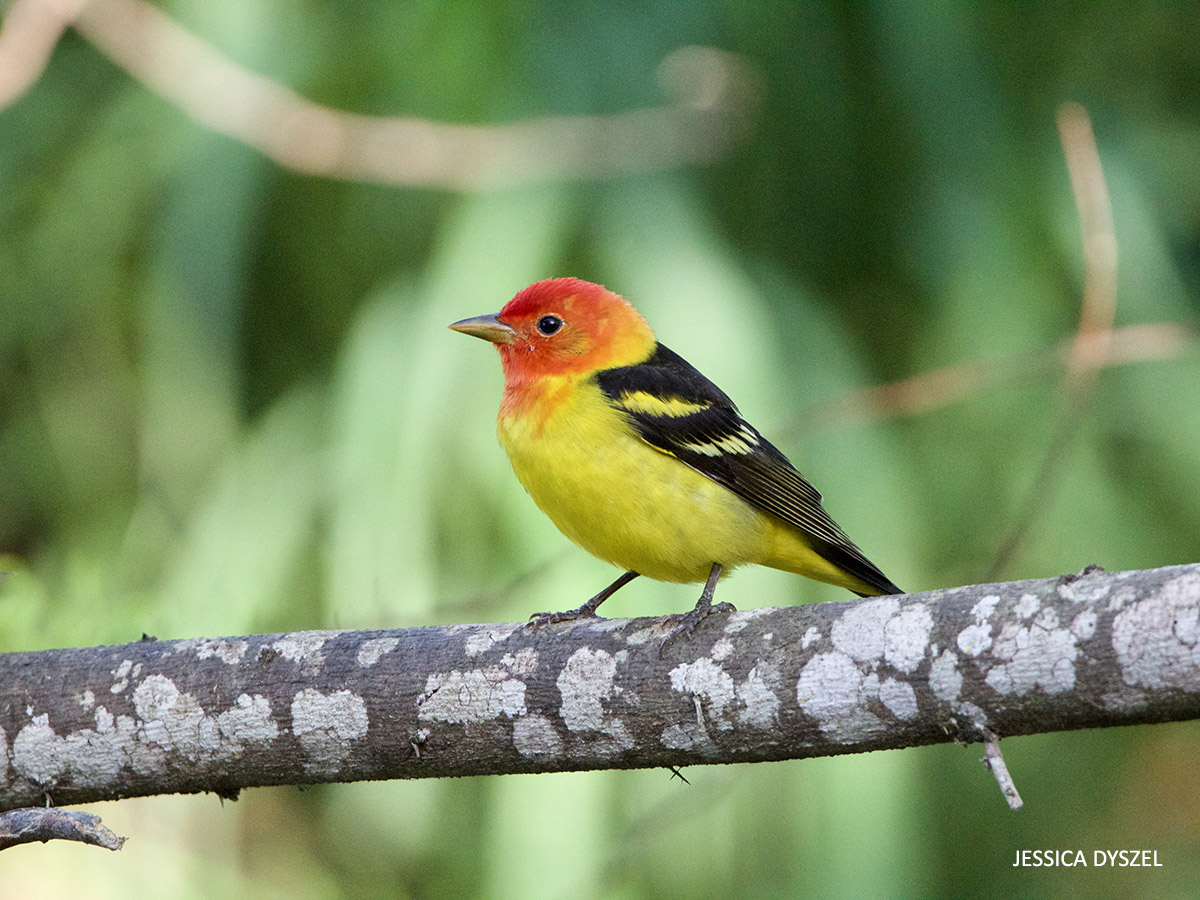 We made our way back to the island and visited a mudflat that offered refuge to a vagrant Surfbird. Nearby a nature trail alongside the Birding Center offered free trails. Here you can see mangrove subspecies of Yellow Warbler. Everywhere you look, orioles, buntings, grosbeaks, hummingbirds, and tanagers forage about. Migrant warblers pop in to the feeding stations and offer excitement as they make their way along. Resting nightjars gained popularity as everyone vied for a good view during the day. You could spend an entire day in these small areas of South Padre. We spent much of our time in these little birding pockets around the island and met incredible people doing the same. We went to experience spring migration in its fullest and South Padre Island delivered. Color, song, dance, and frivolity was everywhere! The only time we were not seeing or hearing birds was in our beds but then our dreams took over with calls of Great-tailed Grackles and colorful splashes darting through flowering bushes everywhere. We made our way back to the island and visited a mudflat that offered refuge to a vagrant Surfbird. Nearby a nature trail alongside the Birding Center offered free trails. Here you can see mangrove subspecies of Yellow Warbler. Everywhere you look, orioles, buntings, grosbeaks, hummingbirds, and tanagers forage about. Migrant warblers pop in to the feeding stations and offer excitement as they make their way along. Resting nightjars gained popularity as everyone vied for a good view during the day. You could spend an entire day in these small areas of South Padre. We spent much of our time in these little birding pockets around the island and met incredible people doing the same. We went to experience spring migration in its fullest and South Padre Island delivered. Color, song, dance, and frivolity was everywhere! The only time we were not seeing or hearing birds was in our beds but then our dreams took over with calls of Great-tailed Grackles and colorful splashes darting through flowering bushes everywhere.
TAKE THE JUNE CHALLENGE
The Great Florida Birding and Wildlife Trail is again hosting the June Challenge this year!
 June Challenge is a friendly statewide competition to encourage birders to get outside and go birding during the summer months, a time when many Florida birders might prefer to stay inside in air-conditioned comfort! As we’ve seen in previous years, many interesting birds can be found, including some late migrating warblers and unusual shorebirds. Cool birds like Pied-billed Grebe, Brown Booby, Magnificent Frigatebird, and Cory’s Shearwater, all of which are not typically expected in our area at this time of year (or at all!), were found last year by local June Challenge participants, so you never know what you might find. June Challenge is a friendly statewide competition to encourage birders to get outside and go birding during the summer months, a time when many Florida birders might prefer to stay inside in air-conditioned comfort! As we’ve seen in previous years, many interesting birds can be found, including some late migrating warblers and unusual shorebirds. Cool birds like Pied-billed Grebe, Brown Booby, Magnificent Frigatebird, and Cory’s Shearwater, all of which are not typically expected in our area at this time of year (or at all!), were found last year by local June Challenge participants, so you never know what you might find.
The rules are simple:
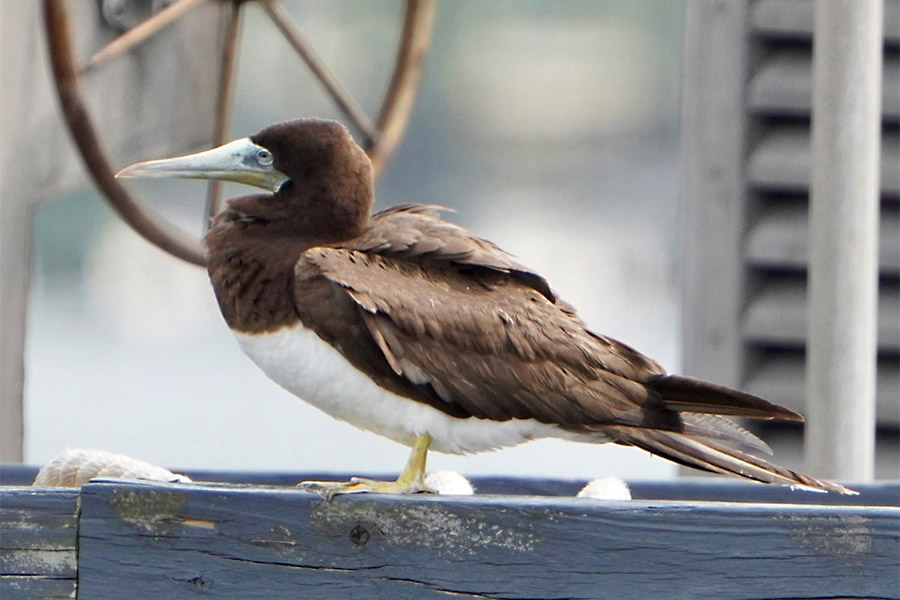 Count birds that you see during the month of June in a single county. (You can participate in multiple counties, but the challenge is county-by-county, so doing multiple counties makes it that much more difficult. However, if you like a challenge…) Count birds that you see during the month of June in a single county. (You can participate in multiple counties, but the challenge is county-by-county, so doing multiple counties makes it that much more difficult. However, if you like a challenge…)- You must actually SEE a bird to be able to count it for the challenge. “Heard” birds do not count!
- You will be competing with birders in your own county, but keep in mind that it’s a friendly competition, so sharing great sightings will increase the fun for everyone.
- You can count all free-flying birds that you see (no captive birds), but keep track of how many ABA-countable and non-countable species are on your list.
At the end of the month, upload your final list to the June Challenge website. Each of the winners in our three counties (Clay, Duval, and Nassau) will receive a fun prize for seeing the most bird species during the month of June, so get out there and start counting!
SUMMERTIME PHOTO SHARING PROJECT
It’s that time of year again - time to get your photos in for our Summertime Photo Sharing Project! We know that many of our members are talented photographers, and we would love to share your beautiful bird photos again this summer!
Have you photographed any interesting birds in the last 12 months? If so, we want to incorporate them into a slide show of our members' best bird photos captured since June of 2022. Here's how to participate:
- Review your bird photos from the past year and select up to 10 of your best shots.
- Email them to us at duvalaudubon@gmail.com (please, only submit via email).
- For each photo, be sure to include the ID of each bird species, the date and location where the photo was captured, and any additional information you want viewers to know about your photo.
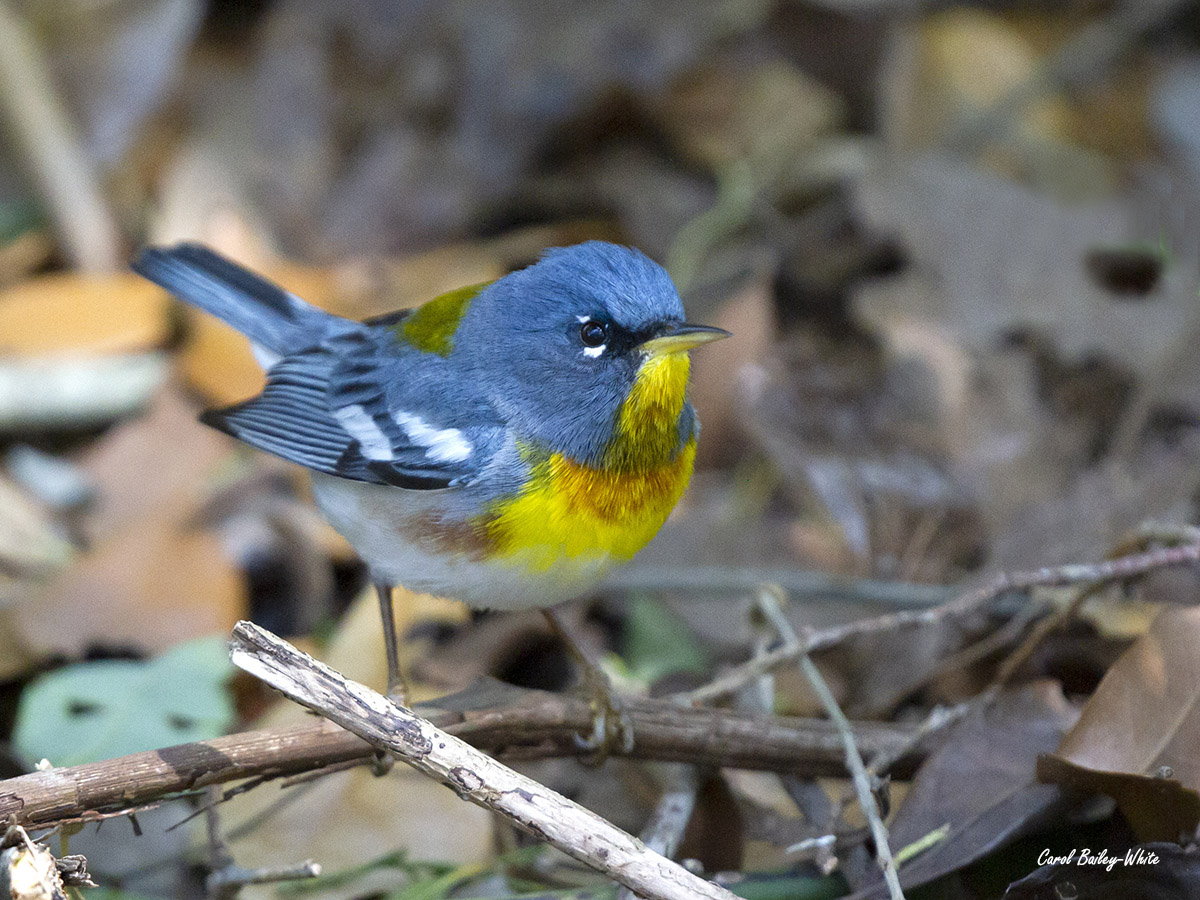 We’ll compile them into a video slide show showcasing our members’ incredible photographic talents! Need some inspiration? Check out last year’s video to see the beautiful photos that chapter members contributed last summer! We’ll compile them into a video slide show showcasing our members’ incredible photographic talents! Need some inspiration? Check out last year’s video to see the beautiful photos that chapter members contributed last summer!
The deadline for submitting your photos for inclusion in our Summertime Photo Sharing Project will be Friday, June 30, 2023, and we'll have the video slide show ready for your viewing pleasure on our YouTube channel by July 31st. If you haven't already included your personal watermark on your photos, we'll add your name to each photo to make sure all photos are properly credited to the photographer.
We look forward to seeing (and sharing) your awesome bird photos! Please feel free to reach out to us at duvalaudubon@gmail.com with any questions about how to participate.
SUMMER BREAK
Duval Audubon Society is on break for the summer! Our chapter takes a break from our regular activities during the months of June, July, and August, but your chapter leaders will still be working hard over the summer to plan exciting field trips, fascinating informational presentations, and much more for the fall season starting in September.
We’ll also be working with our partners at the Jacksonville Zoo & Gardens and St. Johns Regional Audubon Society to recruit and train volunteers for the Lights Out Northeast Florida initiative fall migration season beginning on September 15th. If you would like to volunteer, please complete our application and we will get back with you soon.
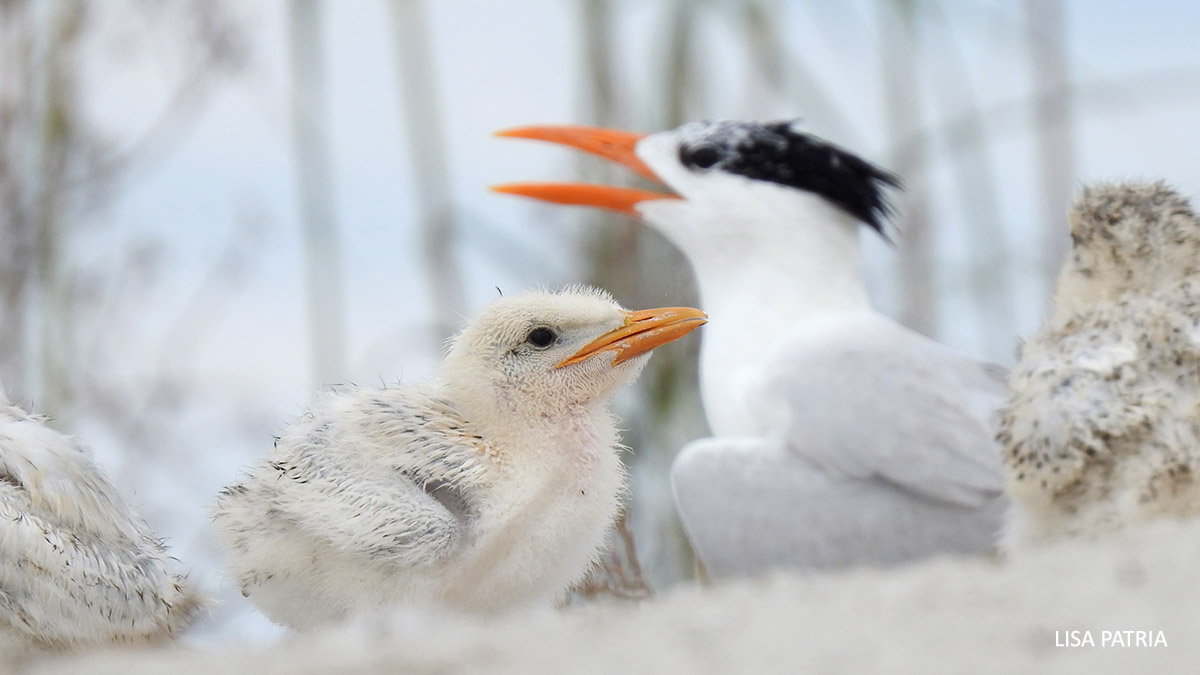 One activity that will be going full swing over the summer months is the Timucuan Shorebird Partnership’s shorebird stewarding program at beachfront parks in Duval and Nassau counties. Jacksonville’s Huguenot Memorial Park has the only nesting colony of Laughing Gulls and Royal Terns on Florida's Atlantic Coast, and several other species of imperiled shorebirds have also been found to nest there as well. There is a strong need for stewards to help the public share the beach responsibly with our feathered friends and allow these birds to nest safely. Shorebird nesting season in our area generally runs from May until the beginning of August, so if you have a few hours to spare over the summer or have questions about shorebird stewarding, please get in touch with our conservation director for Duval County Elizabeth Filippelli at elizabeth.filippelli@gmail.com. One activity that will be going full swing over the summer months is the Timucuan Shorebird Partnership’s shorebird stewarding program at beachfront parks in Duval and Nassau counties. Jacksonville’s Huguenot Memorial Park has the only nesting colony of Laughing Gulls and Royal Terns on Florida's Atlantic Coast, and several other species of imperiled shorebirds have also been found to nest there as well. There is a strong need for stewards to help the public share the beach responsibly with our feathered friends and allow these birds to nest safely. Shorebird nesting season in our area generally runs from May until the beginning of August, so if you have a few hours to spare over the summer or have questions about shorebird stewarding, please get in touch with our conservation director for Duval County Elizabeth Filippelli at elizabeth.filippelli@gmail.com.
If you’re not a member of Audubon, join now or look for our membership campaign in September as well. (Not sure of your membership status? Please reach out to our Membership Director Christine Lucas at christinelucas@duvalaudubon.org.)
Wishing you all the best for a fun and happy summer – we’ll see you in the fall!
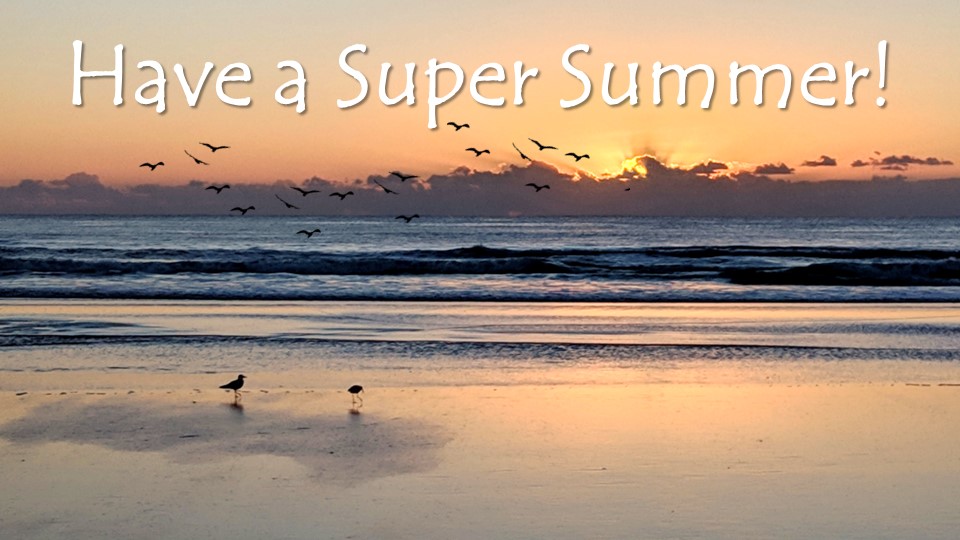
All content by Carol Bailey-White unless otherwise noted.
Duval Audubon Society, Inc.
P.O. Box 16304
Jacksonville, FL 32245
www.duvalaudubon.org
    
|


 LONF volunteers began collecting data on bird deaths and injuries due to building collisions in downtown Jacksonville in the spring of 2021, and we’ve observed a stark contrast between the spring and fall migration seasons. So far, teams have found an average of 48 birds killed and 18 birds injured by building/window strikes in the downtown area during spring migration each year. In comparison, an average of 165 dead birds and 33 injured birds have been found during fall migration so far.
LONF volunteers began collecting data on bird deaths and injuries due to building collisions in downtown Jacksonville in the spring of 2021, and we’ve observed a stark contrast between the spring and fall migration seasons. So far, teams have found an average of 48 birds killed and 18 birds injured by building/window strikes in the downtown area during spring migration each year. In comparison, an average of 165 dead birds and 33 injured birds have been found during fall migration so far.  One thing to keep in mind is that the data only reflects part of the actual number of birds affected by building strikes in the downtown Jacksonville area each season; we know there are many more birds that we haven’t found. There are several reasons for this: 1) with a limited number of volunteers, it’s not possible to survey
One thing to keep in mind is that the data only reflects part of the actual number of birds affected by building strikes in the downtown Jacksonville area each season; we know there are many more birds that we haven’t found. There are several reasons for this: 1) with a limited number of volunteers, it’s not possible to survey 



 We’ll compile them into a video slide show showcasing our members’ incredible photographic talents! Need some inspiration? Check out
We’ll compile them into a video slide show showcasing our members’ incredible photographic talents! Need some inspiration? Check out  One activity that will be going full swing over the summer months is the
One activity that will be going full swing over the summer months is the 